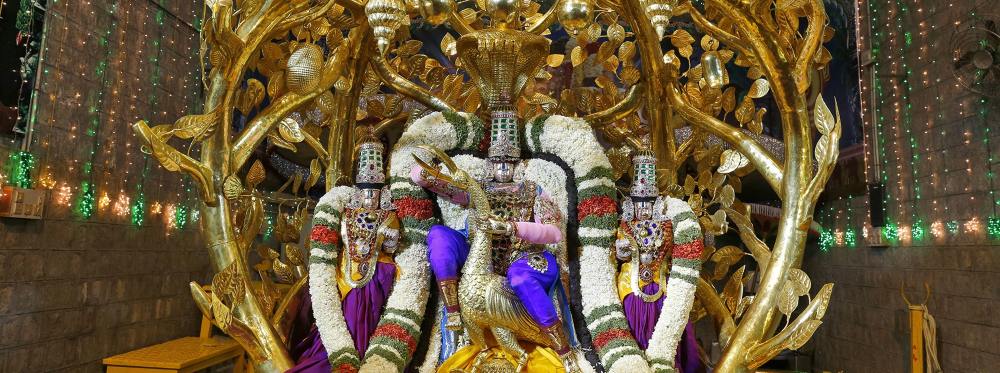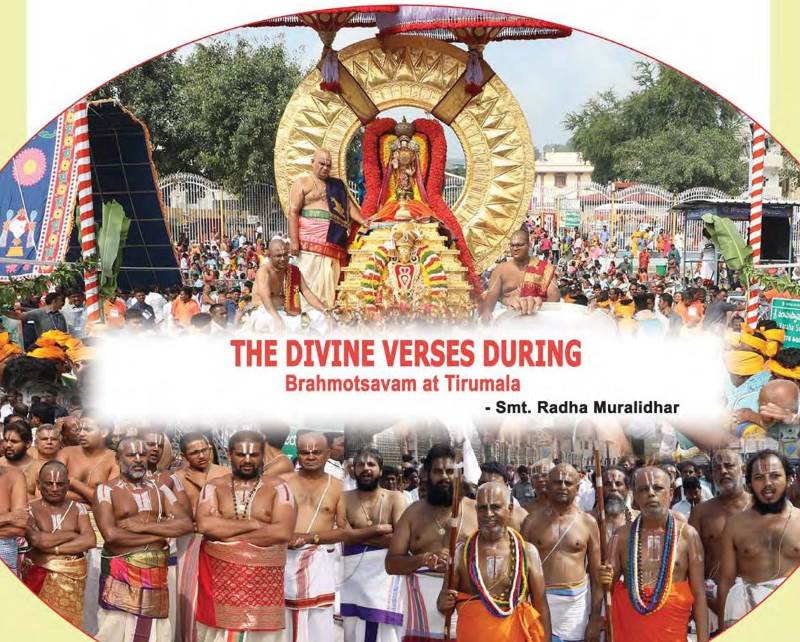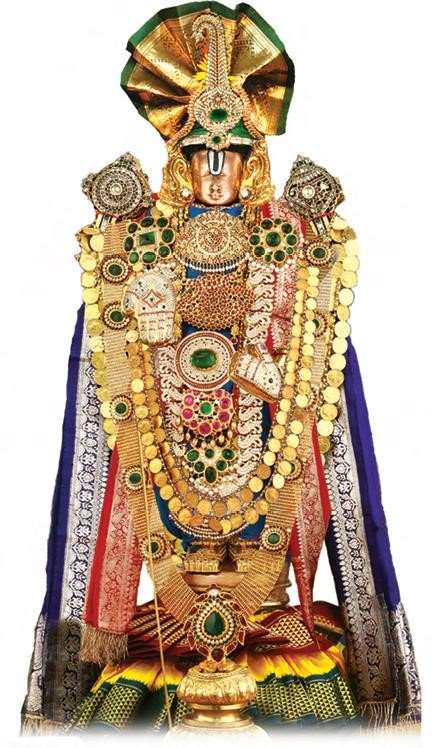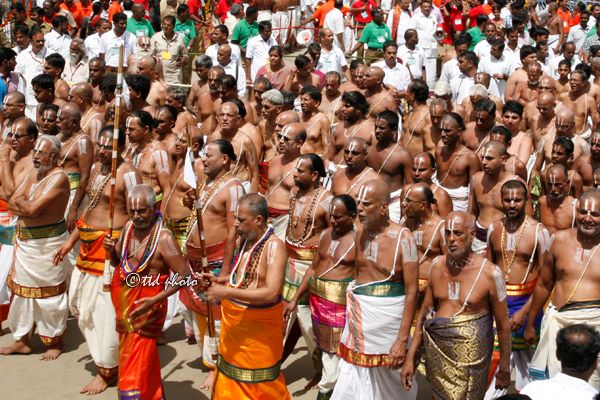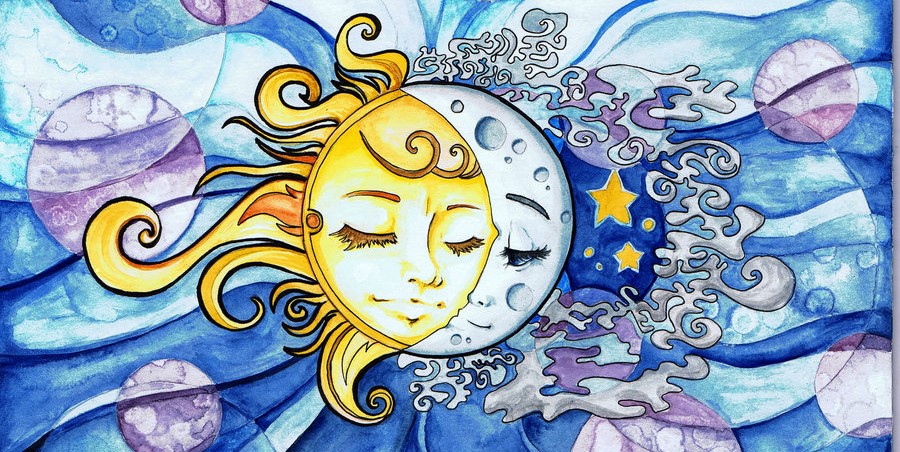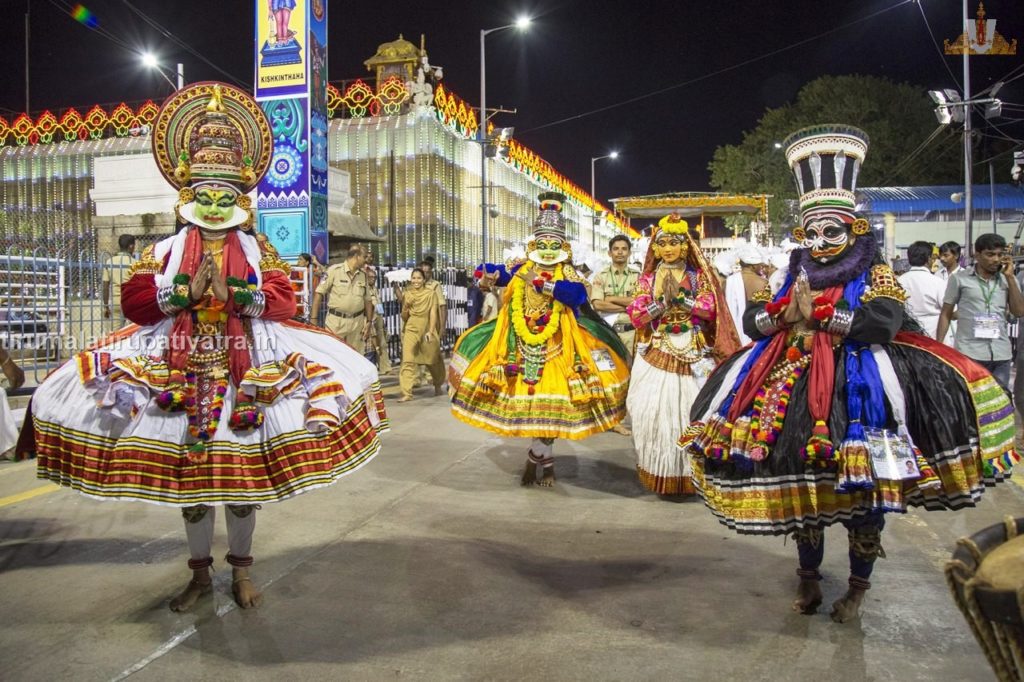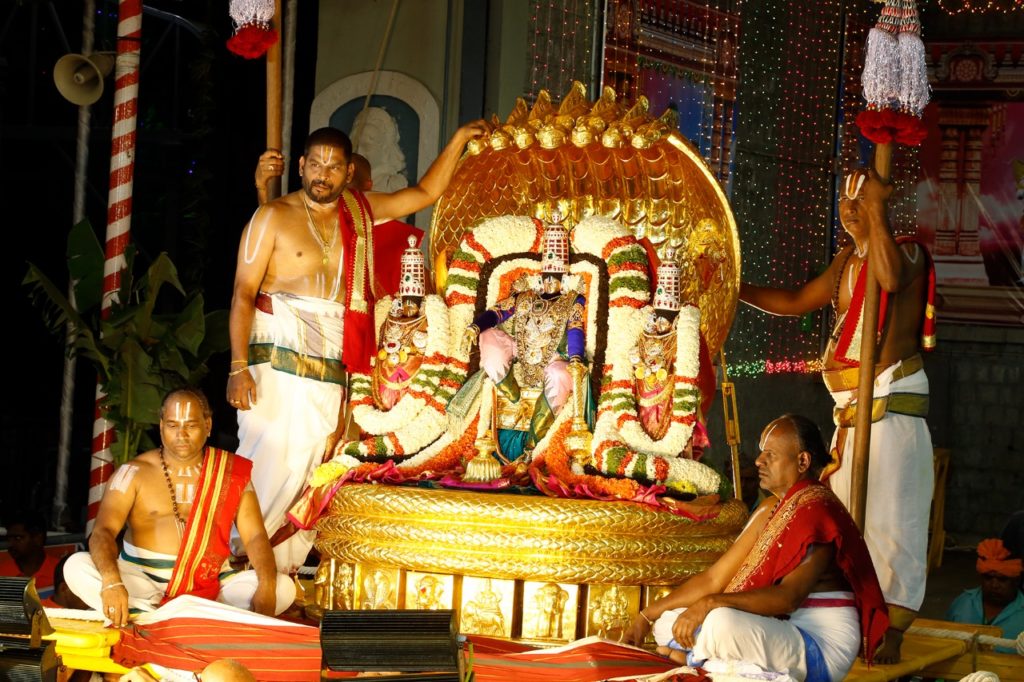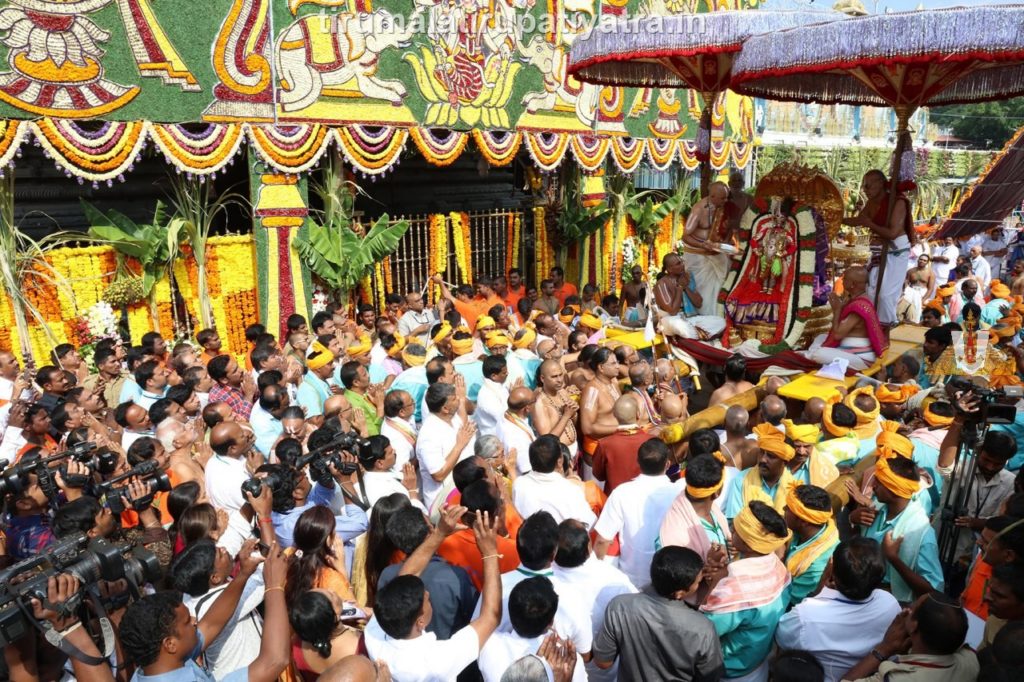Ashtadikpalakas In Service of Brahmotsavams The Ashtadikpalakas are eight in number. As their collective name suggests, they rule the eight quarters or the eight directions of the universe. Ashta means eight, “dik” means quarters or directions and” pālaks “means rulers. According to Padma Purana, long long ago at the time of starting Kaliyuga, sacred Narayanadri Read More
Category: Brahmotsavam
Once a year, the Brahmotsavams are celebrated, In the procession, the Lord takes a majestically reclined posture on the various ‘vahanams’
Brahmotsavams 2024 – The Festival Performed by Lord Brahma
Srivari Brahmotsavams 2024 The celebration of Srivari Brahmotsavams is the grandest spectacle of the year. Hundreds of thousands congregate at Tirumala to have the grand darshan of Lord Venkateswara as He moves around the streets on a different mount each morning and evening for nine days. Filled with excitement and devotion, the atmosphere is charged. Read More
Divine Verses (4000) During Brahmotsavams at Tirumala
4000 Divine Verses Srivari Brahmotsavams Srivari Brahmotsavams of this year will be celebrated between 4th October and 12th October 2024. The holy Thiru Vengadam Hills, perhaps the most famous place of pilgrimage, always carries a festive atmosphere with the crowds pouring in from all parts of the world and this vast land of ours. To Read More
Tirupati Balaji – Navaratri Brahmotsavams
Tirumala Sri Vari – Navaratri Brahmotsavams The divine name, “Venkateswara” means the Supreme Lord who removes sins, and blesses us with Nectar, Energy, Prosperity & Wealth. Lord Venkateswara is considered the “Kali-Yuga Varada”, that is ‘the boon-granting Lord of “Kali- Yuga”. It is believed that Lord Sri Venkateswara enjoys Utsavams-(according to scriptures the Lord is Read More
Divya Prabandha Ghoshti – Tirumala Brahmotsavam
Article by – Sri Anantha Madabhooshi Divya Prabandha Ghoshti The annual 9-day festival originally believed to be initiated by Lord Brahma Himself aeons ago, the Tirumala Brahmotsavam, continuously gets better in execution year after year. This festival is not like any other festival held in Tirumala for Lord Malayappa Swami. What makes this unique is Read More
Ashtadikpalakas – The Gods of 8 Directions
Ashtadikpalakas In Service of Brahmotsavams The Ashtadikpalakas are eight in number. As their collective name suggests, they rule the eight quarters or the eight directions of the universe. Ashta means eight, “dik” means quarters or directions and” pālaks “means rulers. According to Padma Purana, long long ago at the time of starting Kaliyuga, sacred Narayanadri Read More
Adhika Masa – The Extra Month
Annual Brahmotsavas – Adhika Masa Today, the annual Brahmotsavas in Tirumala is celebrated for nine days during the month of Kanya. But, whenever there is an extra month as per the Chandramana, two Brahmotsavas are celebrated. It is an established tradition to hold the festival, having fixed the Avabritha on the day with Sravana nakshatra Read More
Cultural and Folk Arts – Brahmotsavams
Brahmotsavam – A Festival organized by Brahma According to some of the Epic Sources, it is on the day of Lord Sri Venkateswara’s Self Manifestation on the Tirumala Hills that his son BRAHMA was called by HIM and asked to celebrate a festival in memory of His Manifestation Day. Ever since this festival has been Read More
Pedda Sesha Vahana Seva 2018
There is one ceremony or the other almost daily for Lord Venkateswara manifest on Tirumala. Different ceremonies are conducted on a grand scale for the Lord with different time frames— daily, fortnightly, monthly and yearly. Of them, special mention may be made of annual Brahmotsavas. Devotees go on raptures witnessing the Lord on different carriages Read More
Chinna Sesha Vahana Seva 2018
There is one ceremony or the other almost daily for Lord Venkateswara manifest on Tirumala. Different ceremonies are conducted on a grand scale for the Lord with different time frames— daily, fortnightly, monthly and yearly. Of them, special mention may be made of annual Brahmotsavas. Devotees go on raptures witnessing the Lord on different carriages Read More

